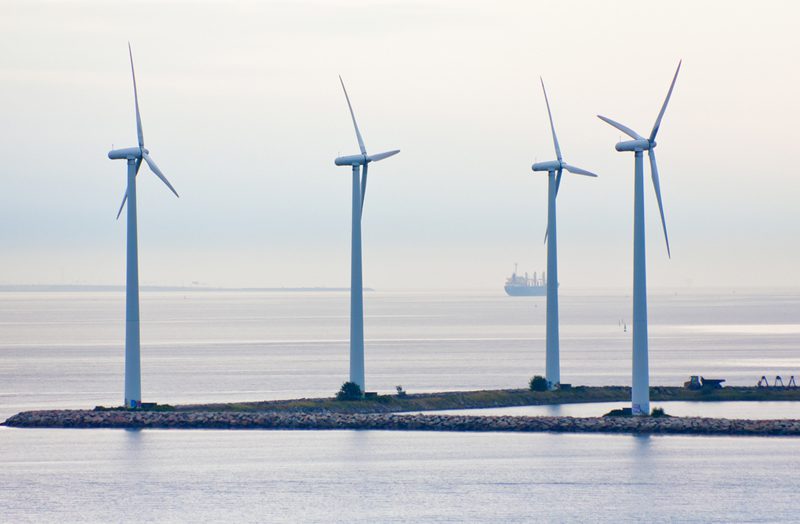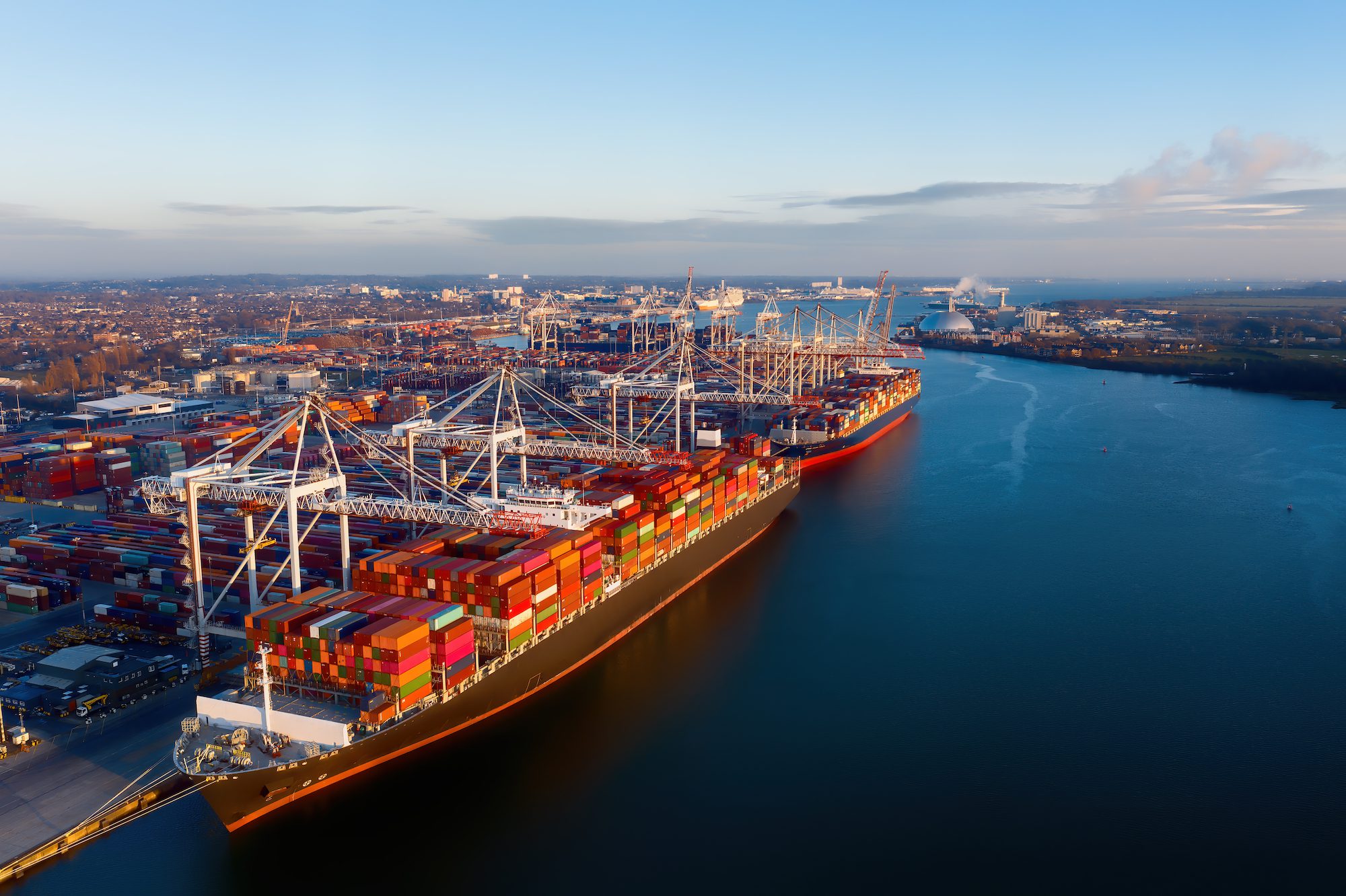(Bloomberg) — Sales of offshore wind turbines collapsed in the first half, a sign the power industry and its financiers are struggling to meet the ambitions of leaders from Angela Merkel in Germany to Britain’s David Cameron.
One unconditional order was made, for 216 megawatts, 75 percent less than in the same period of 2011 and the worst start for a year since at least 2009, according to preliminary data from MAKE Consulting, a Danish wind-energy adviser. Vestas Wind Systems A/S of Denmark, the largest manufacturer, won the contract while Germany’s Siemens AG was among those shut out.
That’s a setback for Chancellor Merkel and Prime Minister Cameron, who are targeting a 10-fold expansion in offshore wind to limit fossil fuel use and create jobs. Banks have curbed lending to developers as Europe’s financial crisis spread, and utilities held off on new projects because of delays in connecting existing ones to high-voltage transmission grids.
“The industry in Germany has been frozen for a few months because of grid issues,” said Jerome Guillet, the Paris-based managing director of Green Giraffe Energy Bankers, which advises on offshore wind projects. In the U.K., there’s a “lull” as the government moves to a new round of contracting, he said.
Those nations have the most projects. Connections to grids are being held up in both by a lack of investment, cable, engineers and ships capable of doing the work after European Union countries called on companies to build the world’s biggest collection of sea-based wind parks in the North and Baltic Seas.
7,000 at Sea
Together the group has set out to operate about 3,400 offshore turbines by 2015 and another 3,600 by 2020, Bloomberg New Energy Finance estimated. The forecast, which projects windmills contributing 2.7 percent of the EU’s power demand, is contingent on government support remaining stable.
More than two decades after the first wind farm at sea was installed in Denmark in 1991, the industry is grappling with how to expand beyond the current 1,290 offshore turbines operating in Europe, with 3,500 megawatts of capacity, serving about 3 million households, according to BNEF.
The 216-megawatt order Vestas won for a wind farm off Belgium compares with 855 megawatts amassed by manufacturers from January and June 2011, MAKE said. The deal is the Danish company’s only firm and unconditional offshore order this year, Kasper Ibsen Beck, a spokesman, said by e-mail.
Unconditional Orders
Orders become unconditional when prepayment is received and developers must to ensure financing is in place. Most U.K. and German projects have reserved turbines needed through 2015, though with conditions, said Robert Clover, research director at MAKE.
Siemens, with the most offshore wind turbines installed last year, announced its last offshore wind order in December 2011, Eva-Maria Baumann, a spokeswoman at the company, said by e-mail. Those were unconditional, she said.
In Germany’s section of the North Sea, utility RWE AG is working on foundations for its $1.2 billion Nordsee Ost development but can’t install turbines until a grid connection is made. Competitor EON AG said in February its Amrumbank West project will be delayed 15 months because of grid issues.
The financial crisis has helped draw out negotiations on funding. Centrica Plc, Dong Energy A/S and Siemens in June completed a $660 million financing for the Lincs wind farm off the U.K.’s shores two years after talks first started.
European Push
European nations are leading the push to generate electricity offshore, harnessing relatively steady breezes in the North Sea, where waves in winter can often top 15 feet and gusts more than 90 miles per hour.
Grid operators and their suppliers in Germany underestimated the challenges of connecting projects, Hermann Albers, head of the BWE wind-energy lobby, said in an interview earlier this year. Albers expects Germany won’t reach its 10- gigawatt goal by 2020, installing not more than 6 gigawatts by then.
While government goals are long-term, “any delays today put achievement of those targets at risk,” said Clover of MAKE, which counts General Electric Co. among its customers.
In the U.K., government plans announced in May to overhaul the electricity market has blurred the picture about what developers can earn over the coming decades.
“It’s hard for the developer to commit to building without a clear framework,” Clover said. “The longer we see uncertainty in the U.K., then the greater the prospects of delays and the less likelihood orders will be placed.”
As a result, Vestas in June shelved plans to build one of the biggest offshore turbine factories in southeast England. The Aarhus, Denmark-based company’s plant making a 7-megawatt machine would have created 2,000 jobs. Offshore machines are bigger and generate more revenue than land-based turbines.
Vestas Shares
Shares of Vestas, the world’s biggest wind turbine maker, have fallen 80 percent in the past year through yesterday, underperforming the 57 percent decline in the Bloomberg Industries Wind Turbine Pure-Play Index tracking 14 companies in the industry. Siemens, which with Vestas dominates the offshore business, dropped 27 percent over the same period.
“The major hindrance from 2013 to the sector will be reducing investor uncertainty that is stalling the development of the sector,” said Fraser Johnston, a wind analyst at New Energy Finance in London.
Suzlon Energy Ltd.’s German unit Repower Systems SE didn’t get unconditional orders this year, president for offshore Frank Zimmermann said. He said by e-mail there are “realistic opportunities” this situation will change in the second half. Repower’s March order for 332 megawatts at the German Gode Wind I project had conditions, he said.
General Electric
General Electric got no unconditional offshore orders this year, spokeswoman Karin Funke-Rapp said. GE, based in Fairfield, Connecticut, finished a trial run of its 4.1-113 offshore machine in Goteborg, Sweden. It’s working with customers on further developments and will announce orders as it gets them, Funke-Rapp said by e-mail.
While Areva SA didn’t get unconditional orders for the period, spokesman Maxime Michaut said by phone the Paris-based company has a backlog of 600 megawatts of unconditional orders. It’s also in discussions for 600 megawatts more, he said.
Alstom SA and Gamesa Corporacion Tecnologica SA., both still developing their offshore machines, got no unconditional offshore orders, according to the companies.
Alstom agreed to supply its turbine to 1,428 megawatts of French offshore projects Electricite de France SA and Dong Energy A/S are developing.
That order, worth about 2 billion euros ($2.4 billion) if it goes through, will be booked over several years and run on a site-by-site basis from 2014. Orders cannot become firm or unconditional until feasibility studies for each project are completed, under French tender rules, a spokeswoman at Alstom who declined to be named said by e-mail.

 Join The Club
Join The Club











